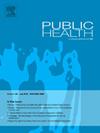韩国初级医生罢工后全国急诊科就诊人数的变化:中断时间序列分析
IF 3.2
3区 医学
Q1 PUBLIC, ENVIRONMENTAL & OCCUPATIONAL HEALTH
引用次数: 0
摘要
韩国初级医生于2024年2月20日开始罢工,以回应政府扩大医学院招生的计划。在韩国,初级医生首先负责急诊病人的评估和管理,因此,他们的缺席可能会影响急诊医疗服务。本研究旨在评估罢工后全国范围内ED使用率的变化。研究设计描述性时间序列研究。方法从全国健康保险数据库中提取2022年6月1日至2024年11月30日的急诊就诊数据。中断时间序列分析调整季节性被用来评估疾病特异性急诊科就诊后的变化。此外,还分析了急诊科床位总数及其入住率的趋势。因此,在罢工的那一周,参观人数急剧下降。对于全因疾病,估计的阶跃变化为- 24,871次就诊(95% CI: - 32,542, - 17,201),对于非意外疾病,估计的阶跃变化为- 19,211次就诊(95% CI: - 24,922, - 13,500)。呼吸系统疾病、外伤、传染病和消化系统疾病的阶梯下降幅度最大。罢工后,全国普通急诊科和儿科床位的入住率急剧下降,即使在COVID-19卷土重来期间也没有恢复到罢工前的水平。结论:初级医生的离职与急诊科访问量和急诊科容量的大幅减少有关。这些发现可能反映了紧急医疗服务的规模缩小和求医行为的变化。需要进一步的研究来评估这种突然的服务中断对公共卫生的影响。本文章由计算机程序翻译,如有差异,请以英文原文为准。
Changes in the nationwide number of emergency department visits following the junior physicians’ walkout in South Korea: An interrupted time-series analysis
Objectives
A walkout of junior physicians in South Korea began on February 20, 2024, in response to the government's plan to expand medical school enrollment. Given that junior doctors are the first to assess and manage patients in emergency department (ED) in Korea, their absence may disrupt emergency medical services. This study aimed to evaluate nationwide changes in ED utilization following the walkout.
Study design
Descriptive time series study.
Methods
Nationwide ED visit data were extracted from the National Health Insurance Database between June 1, 2022, and November 30, 2024. An interrupted time series analysis adjusting for seasonality was used to evaluate changes in disease specific ED visits after the walkout. Additionally, trends in the total number of ED beds and their occupancy rates were analyzed.
Results
ED visits sharply declined in the week of the walkout. The estimated step-change was −24,871 visits (95 % CI: −32,542, −17,201) for all-cause and −19,211 visits (95 % CI: −24,922, −13,500) for non-accidental diseases. The greatest step change decreases observed were respiratory diseases, external injuries, infectious diseases, and digestive diseases. The occupancy rate of nationwide general ED beds and pediatric beds sharply declined after walkout and did not return to pre-strike levels, even during the resurgence of COVID-19.
Conclusions
The junior physicians’ walkout was associated with a substantial reduction in ED visits and ED capacity. These findings may reflect both a scale-down of emergency medical services and changes in healthcare-seeking behavior. Further research is needed to assess the public health implications of such abrupt service disruptions.
求助全文
通过发布文献求助,成功后即可免费获取论文全文。
去求助
来源期刊

Public Health
医学-公共卫生、环境卫生与职业卫生
CiteScore
7.60
自引率
0.00%
发文量
280
审稿时长
37 days
期刊介绍:
Public Health is an international, multidisciplinary peer-reviewed journal. It publishes original papers, reviews and short reports on all aspects of the science, philosophy, and practice of public health.
 求助内容:
求助内容: 应助结果提醒方式:
应助结果提醒方式:


